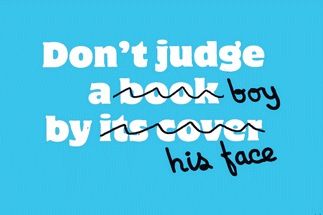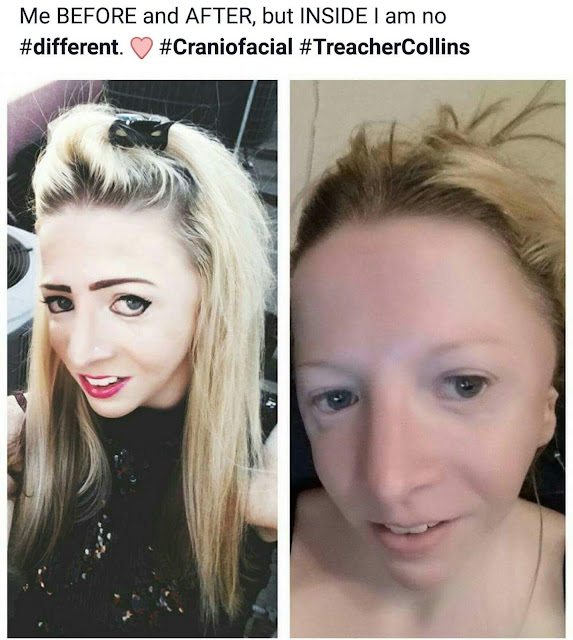The furor over the 2016 Oscars didn’t get my attention at the time. Then I started noticing what those protesting the awards had pointed out. People of color really were being excluded, even for roles that should have automatically gone to them. In fact, according to the University of Southern California, although an average of 75.2 percent of speaking roles already go to white actors, some of those parts are actually characters of color. Why does Hollywood ignore the real thing when casting? And it’s not limited to race and ethnicity.
There is currently a film in the making that should have brought joy to the craniofacial community. Adapted from R.J. Palacio’s New York Times bestseller, “Wonder,” the film will star Oscar and Academy-Award winning actress Julia Roberts as the mother of a boy with a severe facial abnormality. But wait. The boy will be played by Jacob Tremblay, who doesn’t have a craniofacial disorder. To top it off, Julia Roberts was given the starring role of a Latina, when she is a Caucasian actress with no cultural or blood ties to Latin America.
Tremblay will have to be “disfigured” with realistic and prosthetic makeup. Also, he’s going to have to fake a speech impediment. Acting out any behavioral and physical disability is challenging, because there’s a fine line dividing authenticity from misrepresentation. Some films are so tainted by inaccuracy that the acting obviously does not represent the real-life person portrayed, which can be perceived as insulting.
It’s not an isolated incident, either. “Grey’s Anatomy” was touted for including an episode on Treacher Collins syndrome (TCS). When I first saw that episode and the grotesque makeup comparable to Frankenstein on the actress, Amanda Leighton, I immediately felt betrayed. I was disappointed that a woman who doesn’t have the disorder was selected to begin with. I felt that my self-image and the image of TCS was vastly misrepresented. She had a small part, with only a few lines to perform in one episode. Why couldn’t they have sought someone more fitting for that role? Especially considering that five years prior, “Nip/Tuck,” another American television drama series, featured TCS and a very similar acting role, but cast a man who actually had the disorder.
Many of us find it very disappointing that the casting director chose an actor who doesn’t have a craniofacial disorder to play Auggie. We feel that the message behind this choice is contrary to the book “Wonder.” Many of us, including myself, have dealt with the insults of our faces being called a mask on all days but Halloween.
There is irony in the fact that the actor will be altered with makeup, changing his appearance to ours. There is no denying that Jacob Tremblay is an incredibly talented actor and has the capability to perform the role for the film adaptation of “Wonder,” and the same goes for Julia Roberts. However, we must seek to protect what we represent, and we must do so with realism and authenticity.
One of my all-time favorite movies is the heartbreaking 1985 film, “Mask.” The film starred Cher as the mother to a young boy who had a facial disfigurement known as “lionitis.” The movie takes you through his journey in seeking public acceptance and finding love; all the while, he had already outlived his life expectancy. Rocky Dennis was played by actor Eric Stoltz, who does not have a facial disfigurement himself, but he exceeded all of our expectations in playing this role, which also won an Oscar for best makeup. I have a full understanding that this film was made 30 years ago, when there were not many options in diversity. However, we are now in the 21st century, in a world of 7.4 billion people. Special effects and makeup are detailed, expensive and time-consuming. During filming, cast members often spend five to 12 hours a day in makeup. So why not cast a boy who actually has a craniofacial disorder?
It doesn’t have to be this way. It shouldn’t be this way. Stacy Keach, now honorary head of the Cleft Palate Foundation, was one of the first to prove that an actor born with a cleft lip and a partial cleft of the hard palate could be powerful, sexy and anything he aspires to be. Cheech Marin is Latino and born with a cleft lip, and proved that a comedian with a disability can be successful. Believe me, there is a man, woman or child with a craniofacial difference right now who has aspirations to pursue a career in the entertainment industry. We should encourage individuals from all walks of life, regardless of race, gender, sexual orientation, religion or disability to become actors and models.
Most people want to watch movies that are not based on stereotypes. We are the audience who contributes to the success of films. We are inspired by seeing real minorities on the screen, not Caucasian actors cast as ethnic characters, and not actors pretending to have a disability or physical difference. We want to feel as if we are living there in the moment and part of the film. We want to watch movies that resonate with our experiences. We are the real individuals actually living the truth behind the movies. We are just asking for an accurate picture of how we live on a daily basis, and to see and feel the real deal.
Article originally appeared on The Mighty, a website where people with disabilities, diseases and mental illness share their stories.
Join our online community to find upcoming Craniofacial Events and Gatherings nearest you



